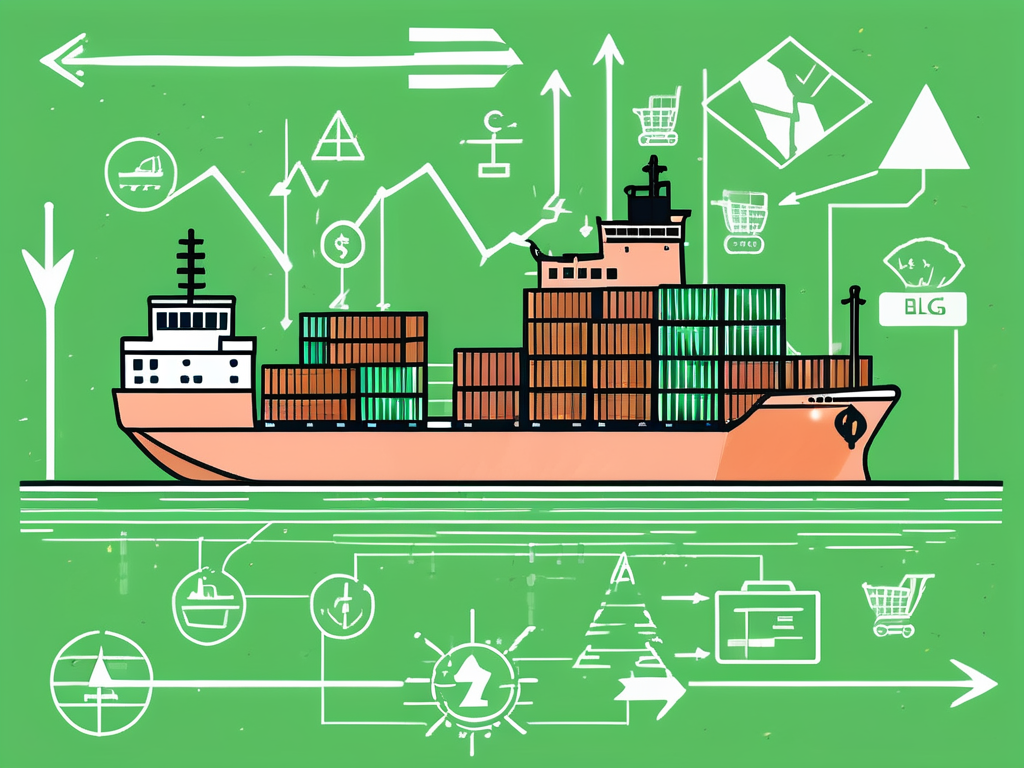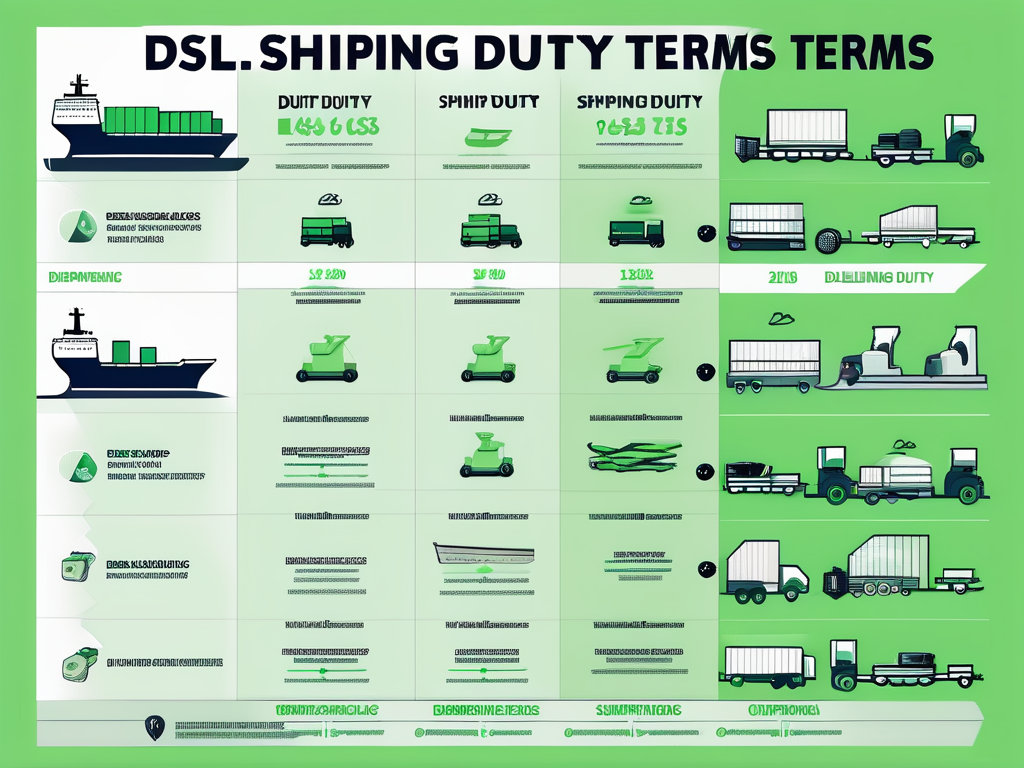Share this
Companies Who Don't Offer Free Shipping But Succeed Anyway
by Shipfusion Team on Jan. 6, 2025

It's no secret that we live in an age where consumers expect free shipping as a standard. But several notable examples of companies who don't offer free shipping show success is possible without the strategy. Can you keep customers happy while saving on this extra cost? Let's explore the implications:
Understanding the Costs of Free Shipping
To comprehend why some companies choose not to offer free shipping, it is essential to understand the hidden costs associated with it. While customers may appreciate the lack of shipping fees, businesses often absorb these expenses, which can lead to tight profit margins.
The Hidden Expenses Behind "Free"
Although the term 'free shipping' sounds appealing, the reality is that companies typically factor these costs into their overall pricing structure. Expenses span a variety of components, including logistics, packaging, and potential losses due to shipping malfunctions.
Costs can accumulate quickly, especially for smaller companies or those with tight budget constraints. For example, shipping via express services might attract more immediate delivery expectations, which can escalate costs significantly. Additionally, returns often incur extra shipping fees, amplifying the financial strain on businesses that offer free shipping.
The complexity of managing these logistics can also lead to inefficiencies, as companies may need to invest in sophisticated tracking systems and customer service resources to handle inquiries related to shipping and returns.
Impact on Profit Margins
Profit margins are critical for the long-term health of a business. Offering free shipping can significantly compress these margins. Companies opting for this model often scramble to offset losses through increased prices in other areas, leading to potential customer dissatisfaction if perceived value doesn’t match costs.
Research suggests that a company providing free shipping may need to boost sales by as much as 30% to maintain profitability compared to those who charge reasonable shipping fees. This delicate balance is why many firms evaluate their shipping policies critically, preferring strategies that sustain their profit margins while still appealing to customers.
Furthermore, businesses must also consider the psychological impact of shipping fees on consumer behavior; studies have shown that even a small shipping charge can deter potential buyers, forcing companies to navigate the tricky waters of pricing and customer expectations. Moreover, the competitive landscape adds another layer of complexity.
With many retailers offering enticing free shipping deals, companies that choose to charge for shipping may find themselves at a disadvantage. This pressure can lead to a race to the bottom, where businesses compromise on quality or service to meet consumer demands for free shipping, ultimately impacting their brand reputation and customer loyalty. In this environment, companies must not only assess their financial capabilities but also their long-term strategic goals, ensuring that any shipping policy aligns with their overall vision and customer experience objectives.
Alternatives to Free Shipping
Rather than eliminate shipping charges entirely, companies can explore several viable alternatives to enhance customer satisfaction while maintaining financial health. These strategies offer flexibility while meeting consumer demand.
Flat-Rate Shipping
Flat-rate shipping presents a straightforward solution. By charging customers a consistent fee regardless of order size or weight, companies eliminate uncertainty. This approach is particularly effective for businesses selling products of similar dimensions and weights, enabling customers to plan their purchases better. For instance, subscription box services frequently utilize flat-rate shipping.
Customers appreciate knowing upfront how much their total cost will be, making the purchasing decision smoother. Many businesses report higher conversion rates when adopting flat-rate strategies. Additionally, flat-rate shipping can simplify logistics for companies, as they can standardize their shipping processes and potentially negotiate better rates with carriers based on predictable shipping volumes.
Minimum Purchase Requirements
Setting a minimum purchase amount to qualify for free shipping can also be an attractive compromise. It encourages customers to spend more before they finalize their order, thus helping businesses increase their average transaction value. A common example includes retailers establishing minimums typically between $50 and $100. This approach not only offsets shipping costs but also channels consumer behavior towards larger purchases, enhancing revenue on every transaction. Moreover, businesses can strategically highlight the minimum purchase requirement on their websites, using banners or pop-ups to remind customers of the benefits of reaching the threshold, which can further stimulate sales and improve customer engagement.
Loyalty Programs and Shipping Benefits
Loyalty programs serve as another tactic to buffer shipping expenses. By offering exclusive shipping discounts or incentives to members, companies can cultivate loyal customer bases. This tactic fosters continued patronage while allowing businesses to maintain baseline shipping fees.
For example, Amazon’s Prime membership provides free shipping as a benefit among others, but it is rooted in a substantial annual fee. Such models illustrate that while shipping may come 'free,' it can still be embedded within a value proposition that customers find appealing. Additionally, businesses can enhance their loyalty programs by incorporating tiered benefits, where customers who reach higher spending levels receive even better shipping perks, thus motivating them to increase their purchases and remain engaged with the brand over time.
The Role of Quality and Unique Products
Shipping is just one part of the customer experience. Businesses can effectively counterbalance not offering free shipping by offering exceptional products that differentiate them from competitors. Quality and uniqueness often outweigh the concern over shipping costs.
Differentiating Through Product Excellence
Companies that provide high-quality, unique, or artisanal products can effectively deflect customer discontent regarding shipping charges. When buyers deem a product extraordinary, they may be more inclined to overlook shipping fees in favor of acquiring that special item.
For instance, brands like Apple capitalize on their premium products. Customers readily accept additional costs, including shipping, because the perceived value of owning an Apple device overshadows those expenses. This phenomenon is not limited to technology; it extends to fashion, home goods, and even beauty products, where brand reputation and product quality create a compelling narrative that justifies higher prices.
Creating a Niche Market
Carving out a niche market can also keep customers engaged regardless of shipping costs. Businesses that cater to specific customer desires or identifiable communities can piggyback on loyalty stemming from specialized offerings. Allegiance often leads customers to willingly pay for shipping charges if the product fulfills a specialized need.
For example, Rare Tea Company, specializing in artisanal and ethically sourced teas, charges for shipping but maintains customer loyalty by offering unique products that cannot be easily replicated. Their narrative around sustainability and fair trade resonates with their target audience, making the cost of shipping secondary to the value of their offerings. Social commerce platforms enable these niche brands to reach a wider audience, allowing them to build a community around their offerings. Even digital connections have the power to transform simple transactions into shared value experiences where customers feel good about their choices and the brands they support.
Enhancing Customer Experience Beyond Shipping
The customer experience transcends shipping policies. Companies that emphasize overall satisfaction resonate more effectively with their clientele. By focusing on holistic improvements to the customer journey, businesses can mitigate concerns about shipping fees.
Exceptional Customer Service
Providing stellar customer service can significantly influence customer perceptions and loyalty. Businesses that prioritize effective communication, timely responses to inquiries, and personalized experiences foster better relationships. When customers feel valued and heard, they are often more forgiving of shipping fees, focusing more on their positive interactions with the brand.
Businesses like Zappos excel in delivering remarkable service, thus retaining loyalty even if shipping costs are not waived. Moreover, the integration of technology in customer service, such as chatbots and AI-driven support, can enhance responsiveness and efficiency. These tools can provide instant answers to common queries, allowing human representatives to focus on more complex issues. By leveraging technology, companies can create a more streamlined and satisfying customer experience, which ultimately contributes to a stronger brand reputation and increased customer retention.
Easy Returns and Exchanges
In an environment where consumers deeply value convenience, offering easy returns can be a game-changer. Businesses that maintain clear, hassle-free return policies demonstrate confidence in their products and respect for their customer’s needs. For instance, retailers that allow returns to local stores create additional convenience for consumers. By ensuring a seamless return process, companies shift customer focus away from shipping fees, enhancing their overall satisfaction with the purchase experience.
Additionally, offering extended return windows can further alleviate customer anxiety regarding online purchases. When customers know they have ample time to evaluate their purchases, they are more likely to complete transactions without the fear of buyer's remorse. This practice not only encourages initial sales but also builds trust, as customers feel assured that their satisfaction is a priority. In a competitive market, such thoughtful policies can set a business apart, leading to increased customer loyalty and repeat purchases.
Effective Marketing Strategies
Marketing is a vital aspect of any business strategy, especially for those not offering free shipping. By leveraging multiple approaches to highlight the value of products and customer experiences, companies can enhance their appeal and strengthen their market position.
Highlighting the Value Proposition
Emphasizing the benefits and value of products is imperative in capturing consumer interest. Businesses that effectively communicate the uniqueness, craftsmanship, or importance of their products often see customer perceptions shift in their favor.
Companies like Warby Parker have successfully positioned their products by underlining the design quality and social responsibility, allowing them to justify higher prices and, by extension, shipping fees. This strategy not only attracts customers who appreciate quality but also builds a community around shared values, fostering brand loyalty that transcends mere transactions.
Moreover, storytelling plays a crucial role in enhancing the value proposition. By sharing the journey of product creation, the artisans behind the scenes, or the sustainable practices employed, brands can create an emotional connection with their audience. This narrative not only enriches the customer experience but also elevates the perceived value of the product, making customers more willing to accept additional costs like shipping.
Utilizing Social Media and Influencer Marketing
Social media continues to rise as a powerful marketing tool. Engaging with customers, showcasing products, and utilizing influencer partnerships can create buzz around a brand, making shipping fees less relevant in the larger context of brand loyalty. Brands that collaborate with influencers can reach wider audiences, showcasing products in relatable contexts and thus increasing overall sales.
As consumers identify with endorsed products, they may willingly embrace associated shipping costs, believing in the value bolstered by influencer advocacy. This dynamic is particularly effective in niche markets, where influencers can create a sense of exclusivity and urgency around a product, further justifying the expense of shipping.
Other types of engaging content, such as behind-the-scenes videos or user-generated content, can also enhance community involvement, making customers feel like they are part of something larger than just a purchase. Through these strategies, companies can effectively navigate the challenges of not providing free shipping while still cultivating a loyal customer base.
Example: Glossier builds brand buzz through influencers and user-generated content. Their customers often share unboxing experiences online, shifting the focus to the joy of owning the product rather than dwelling on the cost of shipping.
How Shipfusion Caters to Companies Who Don't Offer Free Shipping
Offering free shipping isn’t the only path to success. As these examples show, companies can thrive by implementing creative shipping strategies, emphasizing quality, or fostering loyalty through excellent service and unique products. Whether it’s flat-rate shipping, minimum thresholds, or loyalty perks, there are plenty of ways to balance costs while keeping customers happy.
At Shipfusion, we help ecommerce businesses serve that aforementioned goal with streamlined logistics. From inventory management to fulfillment, we have the tools to help you stay competitive, accurate, and sustainably successful. Optimize your shipping strategy by contacting Shipfusion today.
Share this
You May Also Like
These Related Articles

Freight Surcharge: What It Means for Your Shipping Costs

Top Ground Freight Shipping Companies for Reliable Delivery

DDP vs DDU: Choosing the Right Shipping Terms for Your Business
- April 2025 (18)
- March 2025 (26)
- February 2025 (26)
- January 2025 (37)
- December 2024 (16)
- November 2024 (23)
- October 2024 (22)
- September 2024 (27)
- August 2024 (9)
- July 2024 (8)
- June 2024 (5)
- May 2024 (8)
- April 2024 (8)
- March 2024 (6)
- February 2024 (6)
- January 2024 (5)
- December 2023 (3)
- November 2023 (3)
- October 2023 (5)
- September 2023 (4)
- August 2023 (2)
- July 2023 (1)
- June 2023 (4)
- March 2023 (2)
- October 2022 (1)
- September 2022 (5)
- August 2022 (4)
- July 2022 (7)
- June 2022 (4)
- May 2022 (4)
- April 2022 (6)
- March 2022 (2)
- February 2022 (1)
- January 2022 (3)
- December 2021 (2)
- November 2021 (4)
- October 2021 (2)
- September 2021 (5)
- August 2021 (4)
- July 2021 (4)
- June 2021 (3)
- May 2021 (2)
- April 2021 (3)
- March 2021 (3)
- February 2021 (3)
- January 2021 (2)
- December 2020 (4)
- November 2020 (2)
- October 2020 (4)
- September 2020 (2)
- July 2020 (5)
- June 2020 (4)
- May 2020 (2)
- April 2020 (2)
- March 2020 (4)
- February 2020 (1)
- December 2019 (1)
- May 2018 (1)
- March 2018 (2)
- February 2018 (3)
- January 2018 (3)
- November 2017 (3)
- July 2017 (4)
- March 2017 (3)
- February 2017 (5)
- January 2017 (3)
- December 2016 (4)
- November 2016 (6)
- October 2016 (6)
- October 2015 (1)
- September 2015 (1)
- June 2015 (3)
- May 2015 (3)
- August 2014 (1)
- July 2014 (1)
- March 2014 (1)
- February 2014 (1)